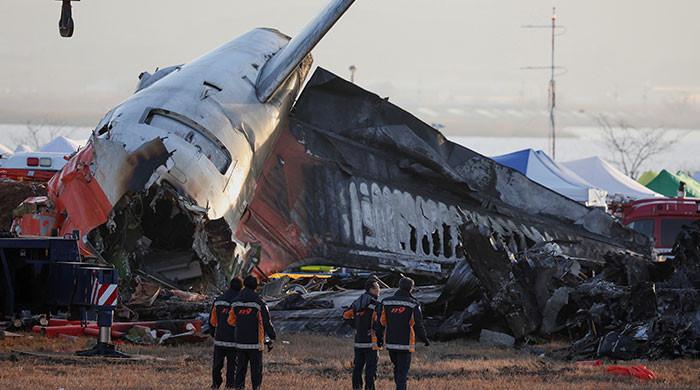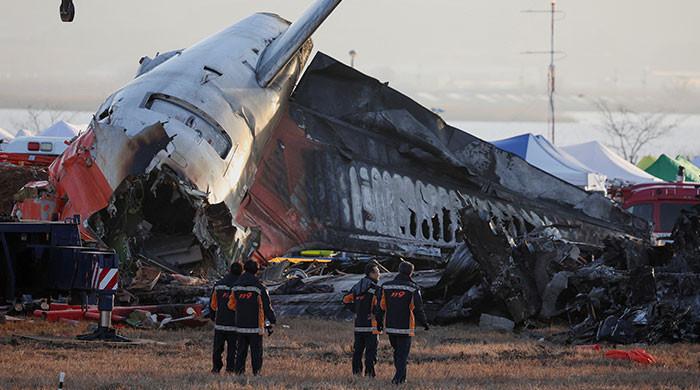African migrants turn to deadly ocean route as options narrow
Diallo is part of a resurgence in African migrants taking the treacherous Atlantic route to the Spanish territory
December 03, 2018

DAKAR: Assane Diallo is making final preparations for a journey he knows could cost him his life: one thousand miles across open ocean from Senegal to the Canary Islands in a 50-foot wooden boat held together with rusty nails.
The 35-year-old fisherman hopes to push off this week from a beach in the capital Dakar with water, dried food and potentially dozens of passengers. He just needs two motors and enough petrol for the week-long journey and also to patch up a three-foot (1 meter) gash in the hull.
Diallo is part of a resurgence in African migrants taking the treacherous Atlantic route to the Spanish territory this year in search of jobs and prosperity that they cannot find at home.
Many migrants see the chain of islands off the Moroccan coast as the only viable option left as the European Union spends millions of dollars cutting off land routes through north Africa. They consider it a launchpad for asylum in mainland Europe.
“Some, if they see a canoe, do not even consider staying here. They will leave at all costs,” said Diallo, looking over the litter-strewn beach where listless teenagers mill about at dusk, some fixing fishing nets or painting boats in bright reds and blues.
Over 1,200 migrants arrived in the Canary Islands between Jan. 1 and Nov. 14, Spanish Interior Ministry data show, the highest in nine years and a four-fold increase over the same period in 2017.
It marks the revival of a worrying trend. In 2006 - when 30,000 migrants managed to reach the Canary Islands - some 7,000 people died trying to make the crossing, rights groups say. In the decade that followed, Spanish patrols slowed the pace. Land routes through Niger and Libya to Italy became more popular.
But the Italian government has focused on stopping the Libya route. With migrants detained in slave-like conditions in Libya, the numbers arriving in Italy have dropped off dramatically from a peak of 181,000 in 2016.
Still, migrants’ will to leave remains. The fall in arrivals to Italy has corresponded with a surge in attempts to reach Spain, where a record number of migrants has reached the mainland in recent months.
“Managing... migratory flows is very much like squeezing a balloon. When one route closes, the flows increase on another,” said Izabella Cooper, spokeswoman for EU border agency Frontex.
“The only solution to migration is to eliminate the root causes: wars and poverty.”
“VERY, VERY BIG” SEA
Migrants face many dangers on the open ocean, including mountainous waves, blistering heat and starvation.
While the numbers remain small compared to arrivals on the Spanish mainland, authorities in Senegal and Gambia said there has been a rise in boats attempting the crossing to the Canary Islands this year.
The lack of data on departures makes it impossible to calculate how many die.
In October, Guinea Bissau’s coastguard discovered the empty wreckage of a boat that had been carrying dozens of migrants. That same month, a boat with 72 Gambians and Senegalese heading for the Canary Islands was rescued off Guinea Bissau after an engine failure.
One of the migrants, Alieu Gaye, said he went by boat because he heard that land routes had become too dangerous.
“People are afraid to take the road. They prefer to take canoes to travel by the Atlantic Ocean,” he said.
Policing a coastline hundreds of miles long is a tough task, coast guards say.
Spain’s Guardia Civil has worked with the Senegalese Coast Guard since 2006 to intercept migrants. They have two 100-foot boats, one of which goes out every day, but crew members say they rarely find anything.
“The sea is very, very big. And they can leave from wherever in Senegal, Gambia or further south,” said Rafael Carballo Abeger, an attache at the Spanish embassy in Dakar.
Assane Diallo is confident he can evade the coast guard when he leaves before dawn in the coming days. It is worth the risk, he says. Fish stocks are depleting and he can no longer provide for his wife and two children.
“It’s hard to come back and bring nothing home,” he said. “It hurts the heart, that’s why I want to leave.”











